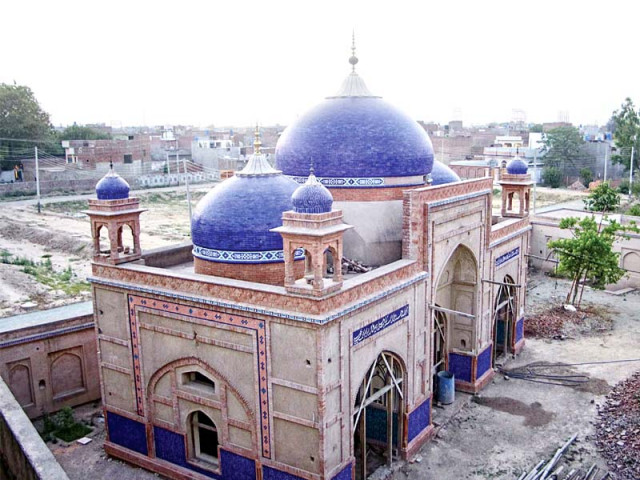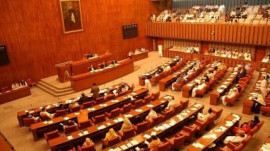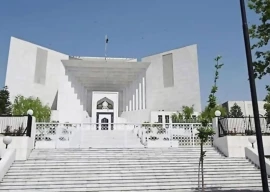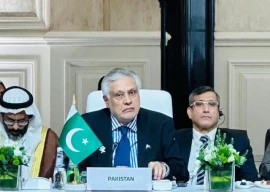
Iqbal Salahuddin has a passion for Islamic architecture in Spain, Morocco, Turkey, Iran and the Subcontinent. So when building a mosque in memory of his father, he decided to borrow from them.
“I wanted to incorporate similar colour themes here,” he says, pointing to the hues of blue in the under-construction mosque at a one-kanal site in Salli Town, which is named after his father Mian Salahuddin, the son-in-law of Allama Iqbal.
“The light sky blue signifies the mercy of God and it is used heavily in early Islamic scripture,” says Salahuddin. Dark blue, the colour of the tiles used for the lower half of the verandah walls, signifies mysticism in Islam, he says. A golden and black arch (mehrab) signalling the direction of the Kaaba is inspired by the tomb of Bayazid Bastami in Iran.
There are inspirations from closer to home too. The floral frescoes are modelled on Masjid Wazir Khan and Masjid Bibi Khanum. Architect Kamil Khan Mumtaz, an authority on Mughal architecture, designed the building.
The structure, made of clay and mortar, took about a year to build. “A cement building may last about 200 years but clay structures can last over a thousand years,” says Salahuddin.
“Using clay and mortar in place of steel, aluminium, cement and glass spares the planet,” says Mumtaz. “There is no pollution, no need to import materials and hence no destruction of the environment.”
The basic structure was put up in about a year, but work on the mosque has been ongoing for five years. “Finding the right tiles and the right artists to paint the frescoes was an arduous task,” Salahuddin says.
These artists are Ustad Rafaqat Ali Naqqash and his sons Shafqat Ali and Majid Ali. They have been working on the Salli Town mosque for the last two years. They have finished some frescoes on the walls on the inside and are currently working on the ceilings.
Since starting his craft in 1971, Naqqash has worked on Shalamar Gardens, Khawabgah and Sheesh Mahal at the Lahore Fort, Masjid Wazir Khan and Marium Masjid near Sheranwala Gate in the Walled City.
He says painting new frescoes is easier than repairing old ones. “Restoration requires finding the exact shade used in the original and careful application of the paint to the existing fresco. This is much harder than designing and painting from the beginning,” he says. Salahuddin purchased some tiles for the mosque from Nasirpur, Sindh. “It was the only place making traditional geometric patterned tiles,” he says. However, unsatisfied with the quality, he requested Clayware, a company specialising in traditional pottery designs, to manufacture the tiles.
Pointing to patterned tiles bordering the domes and highlighting the boundary wall, he says these were produced by Clayware specifically for the mosque. Terracotta tiles that will form the mosque’s floors are yet to be installed.
He is hopeful the mosque, which will have a capacity for 500 worshippers, will be completed between December and March 2013.
Mumtaz, though, does not expect others to follow them in adopting Mughal era techniques to build. “Modern developers do not appreciate the historical appeal of buildings and these techniques are labour intensive. That means the poor make money. Developers are interested in their own profits only.”
Published in The Express Tribune, July 3rd, 2012.




















COMMENTS
Comments are moderated and generally will be posted if they are on-topic and not abusive.
For more information, please see our Comments FAQ